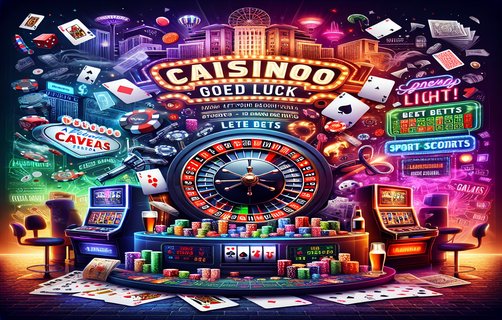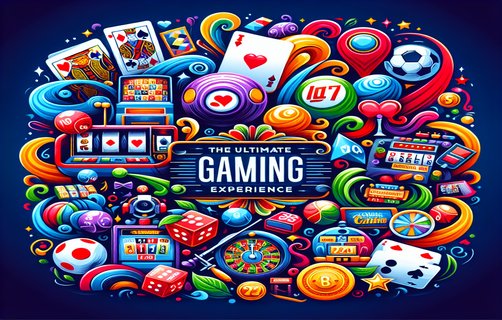Navigating the Dynamic Landscape of Poker Multiplayer Games: A Comprehensive Analysis
पोकर मल्टीप्लेयर गेम्स का डायनेमिक लैंडस्केप: एक व्यापक विश्लेषण

Poker has long stood as a bastion of strategy and chance, drawing players into its intricacies. Particularly, the evolution of multiplayer poker games has introduced a myriad of new dynamics, where random luck factors, objective zone tracking, and player tokens interplay to create uniquely engaging experiences.
At the heart of this evolution lies the concept of random luck factors. These elements inject an element of spontaneity into the game, making it unpredictable and exciting. While skill plays a significant role, the presence of luck ensures that no player can be guaranteed a win, thereby keeping the competition fierce and engaging. This hands-on approach encourages players to adapt and revise strategies in real-time, enhancing their engagement with the game.
Objective zone tracking represents another critical aspect. In multiplayer formats, the spatial dynamics of the game board or play area can translate into significant advantages or disadvantages for players, depending on their ability to navigate these zones effectively. Players must not only play their hands but also consider their position relative to these zones, which can impact their overall strategy significantly.
Movement rules and player tokens bring a tangible layer of strategy to the gameplay. Each player must think critically about their movements and decisions, weighing the short-term benefits against long-term repercussions. This interplay of movement and decision-making is essential for creating a deep gameplay experience that players can immerse themselves in.
Resource trade-offs introduce yet another layer of complexity to the game. Players are often required to make strategic sacrifices, trading immediate gains for future advantages. This mechanism forces players to think critically about their resource management; each decision can lead to new opportunities or threats.
In summary, poker multiplayer games combine random luck factors, objective zone tracking, move-forward strategies, player tokens, movement rules, and resource trade-offs to create a multifaceted gameplay experience. Players must balance their understanding of chance with tactical decision-making while navigating an interactive environment where both the game mechanics and the players’ strategies evolve in real time. As the landscape of poker continues to grow, these elements will guarantee that players remain captivated, confronting both their opponents and the unpredictability of chance on their journey towards victory.
पोकर लंबे समय से रणनीति और संयोग का गढ़ बना हुआ है, जो खिलाड़ियों को इसकी जटिलताओं में खींचता है। विशेष रूप से, मल्टीप्लेयर पोकर खेलों के विकास ने कई नए डायनेमिक्स पेश किए हैं, जहां यादृच्छिक किस्मत के कारक, उद्देश्य क्षेत्र ट्रैकिंग और खिलाड़ी टोकन एक अनूठा आकर्षक अनुभव बनाने के लिए परस्पर क्रिया करते हैं।
इस विकास के दिल में यादृच्छिक भाग्य के कारक का अवधारणा है। ये तत्व खेल में एक तात्कालिकता को इंजेक्ट करते हैं, जिससे यह अप्रत्याशित और रोमांचक हो जाता है। जबकि कौशल एक महत्वपूर्ण भूमिका निभाता है, किस्मत की उपस्थिति यह सुनिश्चित करती है कि कोई भी खिलाड़ी जीत के लिए सुनिश्चित नहीं हो सकता, इससे प्रतिस्पर्धा तीव्र और आकर्षक बनी रहती है। यह हाथों में लेने वाला दृष्टिकोण खिलाड़ियों को वास्तविक समय में रणनीतियों को अनुकूलित और संशोधित करने के लिए प्रेरित करता है, जिससे उनकी गेम के प्रति संलग्नता में वृद्धि होती है।
उद्देश्य क्षेत्र ट्रैकिंग एक और महत्वपूर्ण पहलू का प्रतिनिधित्व करती है। मल्टीप्लेयर प्रारूपों में, खेल बोर्ड या खेल क्षेत्र के स्थानिक गतिशीलता खिलाड़ियों के लिए महत्वपूर्ण लाभ या हानियों में तब्दील हो सकती है, यह इस बात पर निर्भर करता है कि वे इन क्षेत्रों को प्रभावी ढंग से कैसे नेविगेट करते हैं। खिलाड़ियों को न केवल अपने हाथों को खेलना होता है, बल्कि इन क्षेत्रों के सापेक्ष अपनी स्थिति पर विचार करना होता है, जो उनकी समग्र रणनीति पर महत्वपूर्ण रूप से प्रभाव डाल सकता है।
गतिविधि नियम और खिलाड़ी टोकन खेल के तरीके में एक ठोस रणनीति की परत लाते हैं। प्रत्येक खिलाड़ी को अपने आंदोलनों और निर्णयों के बारे में गंभीरता से सोचना चाहिए, तात्कालिक लाभों को दीर्घकालिक परिणामों के खिलाफ तौलते हुए। गतिविधि और निर्णय-निर्माण के इस परस्पर क्रिया से एक गहन गेमप्ले अनुभव बनाना आवश्यक है, जिसमें खिलाड़ी गहराई से डूब सकते हैं।
संसाधन व्यापार-ऑफ और गेम की जटिलता के साथ एक और परत जोड़ते हैं। खिलाड़ियों को अक्सर रणनीतिक बलिदान करने की आवश्यकता होती है, तत्काल लाभों का व्यापार करके भविष्य के फायदों के लिए। यह तंत्र खिलाड़ियों को अपने संसाधन प्रबंधन के संबंध में गंभीरता से सोचने के लिए मजबूर करता है; प्रत्येक निर्णय नए अवसरों या खतरों की ओर ले जा सकता है।

संक्षेप में, पोकर मल्टीप्लेयर खेल तात्कालिक भाग्य के कारक, उद्देश्य क्षेत्र ट्रैकिंग, आगे बढ़ने की रणनीतियों, खिलाड़ी टोकन, गतिविधि नियम और संसाधन व्यापार-ऑफ का संयोजन करते हैं, जिससे एक बहुपरकारी गेमप्ले अनुभव बनता है। खिलाड़ियों को अपने कौशल की समझ को सामरिक निर्णय-निर्माण के साथ संतुलित करना होता है, जबकि एक ऐसे इंटरएक्टिव वातावरण में नेविगेट करते हुए जहां दोनों खेल तंत्र और खिलाड़ियों की रणनीतियाँ वास्तविक समय में विकसित होती हैं। जैसे-जैसे पोकर का क्षेत्र विकसित होता है, ये तत्व सुनिश्चित करेंगे कि खिलाड़ी मोहित रहें, अपने प्रतिद्वंद्वियों और भाग्य की अप्रत्याशितता का सामना करते हुए जीत के रास्ते पर चलें।

comments
AceHigh23
This article captures the essence of multiplayer poker beautifully. I love how it breaks down the elements!
CardShark88
Great insights on random luck factors! It's always a mix of strategy and chance.
BluffMaster007
I never thought about objective zone tracking in poker before. This opens up so many possibilities!
ChipStacker
The analysis on movement rules is spot on! Every move counts in high-stakes games.
RiskyPlayer90
Resource trade-offs really add a layer of strategy. It makes the game so much deeper.
PokerFanatic
Fantastic breakdown! I'm excited to apply these principles in my next game.